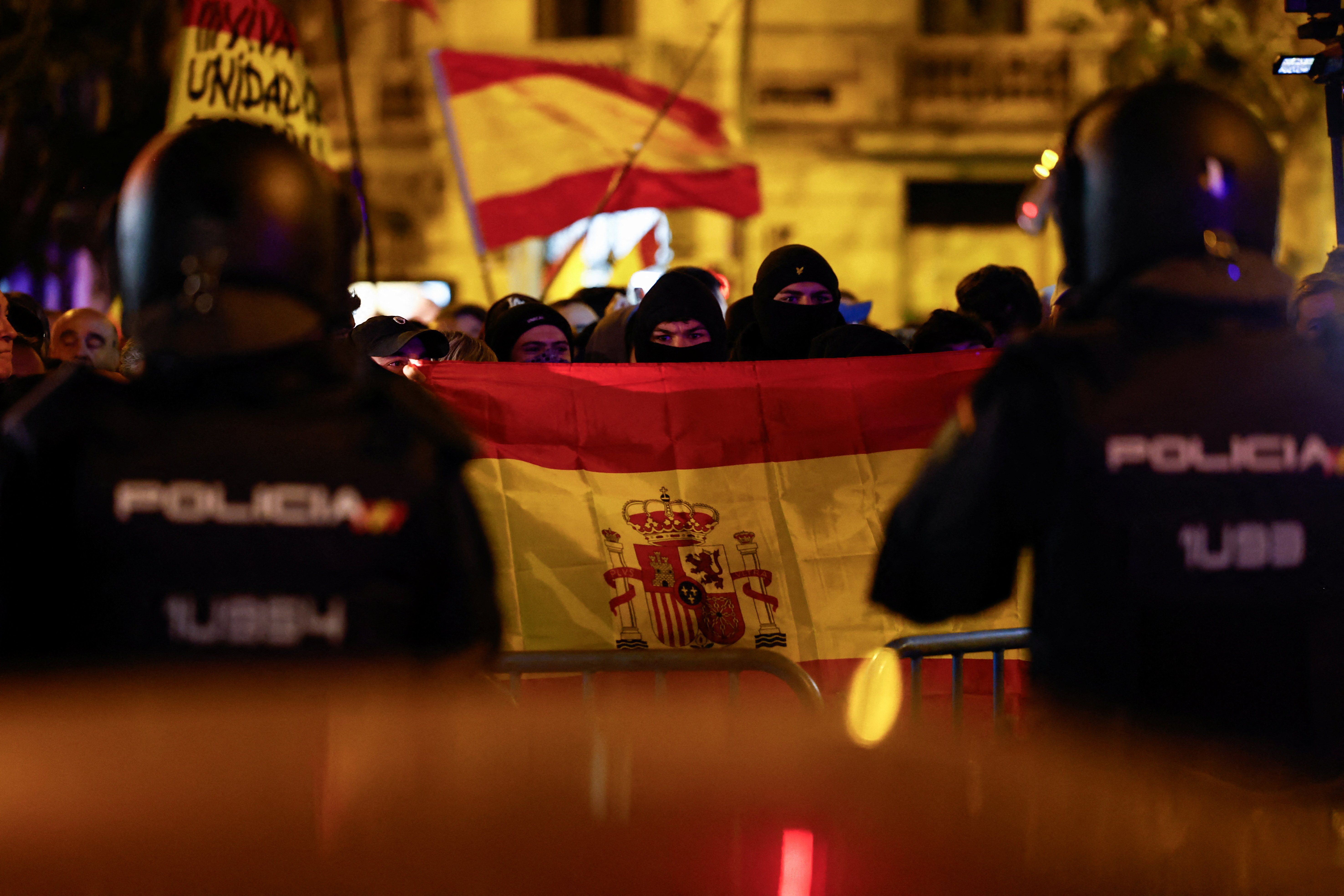Right-wing protests against Spain’s governing Socialist Party erupted in violence this week as Prime Minister Pedro Sánchez moved closer to a deal that would provide Catalan separatists with amnesty in exchange for providing him with the backing he needs to form a new coalition government and avoid fresh elections. Rioting in Madrid on Tuesday night injured 29 police officers and 10 demonstrators.
In July, the conservative People’s Party won the most votes in national elections, but party leader Alberto Núñez Feijóo fell short in September of attracting enough coalition partners to form a government. Sánchez now appears on the verge of forming a center-left coalition that depends on support from the pro-independence Together for Catalonia and the Catalan Republican Left. In exchange for their support, they’ve demanded amnesty for several hundred Catalan politicians and activists in legal trouble following a failed drive in 2017 for Catalan secession from Spain.
Spain’s right-wing opposition accuses Sánchez of flip-flopping on the question of amnesty, which he once called “unconstitutional,” and blames him for the resulting violence, which looks likely to continue.
